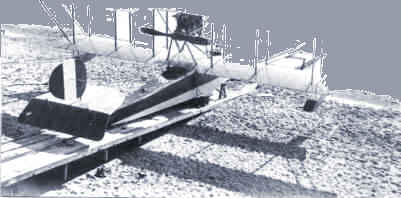 |
AIRCRAFTOF THEA E F |
FBA TIPO H

Development and OperationThe FBA was the Italian licence production version of a French seaplane design. Following the Type C, powered by a Gnome rotary engine, that was built by the SIAI company, the more modern type H, with a revised fuselage, and an inline engine, usuall an Isotta Fraschini V.4B but also a 180 h Hispano Suiza, was built in very large numbers by a plurality of companies: SIAI in Sesto calende, CIVES in Varazze, Ducrot in palermo, Gallinari in Pisa, IAM at Naples, Savoia and Zari in Milan, and it remained in constant production from 1916 to the end of the war. The FBA was assigned to all the Naval Air Stations: Venice, Grado, Porto Corsini, Ancona, Brindisi, Varano, Otranto and Valona, Albania, and it equipped also two Army seaplane squadrons, on the Garda and Iseo lakes. It was also assigned to 21 coastal defence flights, later transformed into squadrons, with numbers from 266a onwards, that were distributed all along the Italian coastlines and in Sicily and Sardinia, to combat the menace of German submarines operating in the Mediterranean. Despite its unsatisfactory performances, particularly climbing with a military load, which caused its replacement by the Macchi L.3 in the Adriatic navla theater of operations and despite it being considered trick to fly, with a tendence to spinning, the FBA was the most widely diffused Italian seaplane, and it was also intensively used by seaplane flying schools at Sesto Calende, Bolsena, Taranto and Orbetello. It remained in use long after the war with the seaplane flying school at Portorose operated by the SISA company. Americans flew the FBA ast the Bolsena NAS flying school. This school had only one fatal accident to an American, on 20 March 1918. MM 1c Clarence A. Nelson took off for his first solo flight, but he crashed with his FBA serial 7637, losing his life. The seaplane was recovered, but the body of the unhappy airman disappeared. |
Aircraft and Flight Characteristics
|
Length: |
10,10 |
|
Height: |
3,33 |
|
Empty Weight |
955 |
|
Loaded Weight |
1480 |
|
Maximum Speed |
145 |
|
Wing Span |
14,50 |
|
Ceiling |
5900 |
|
Climb |
|
|
To 1,000 m |
8 min |
|
To 2,000 m |
20 min |
|
To 3,000 m |
35 min |
References:
- Official data Italian Air Force manuscript 1923 -
- Photo courtesy of Roberto Gentilli
To find other Doughboy Features visit our |
Membership Information  Click on Icon |
For further information on the events of 1914-1918
visit the homepage of |
Michael E. Hanlon (medwardh@hotmail.com) regarding content,
or toMike Iavarone (mikei01@execpc.com) regarding form and function.
Original artwork & copy; © 1998-2000, The Great War Society